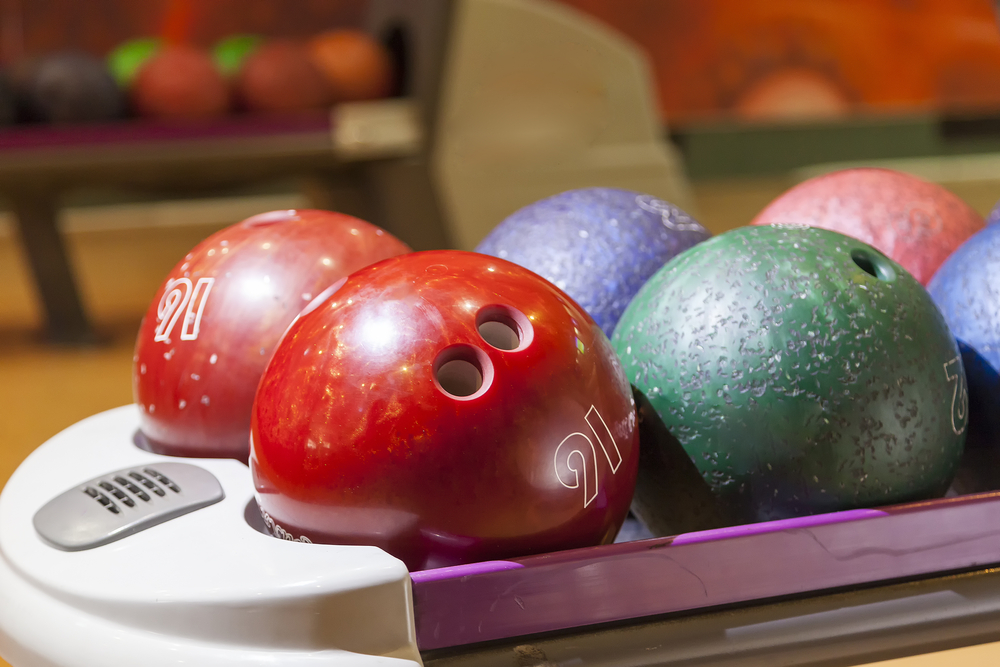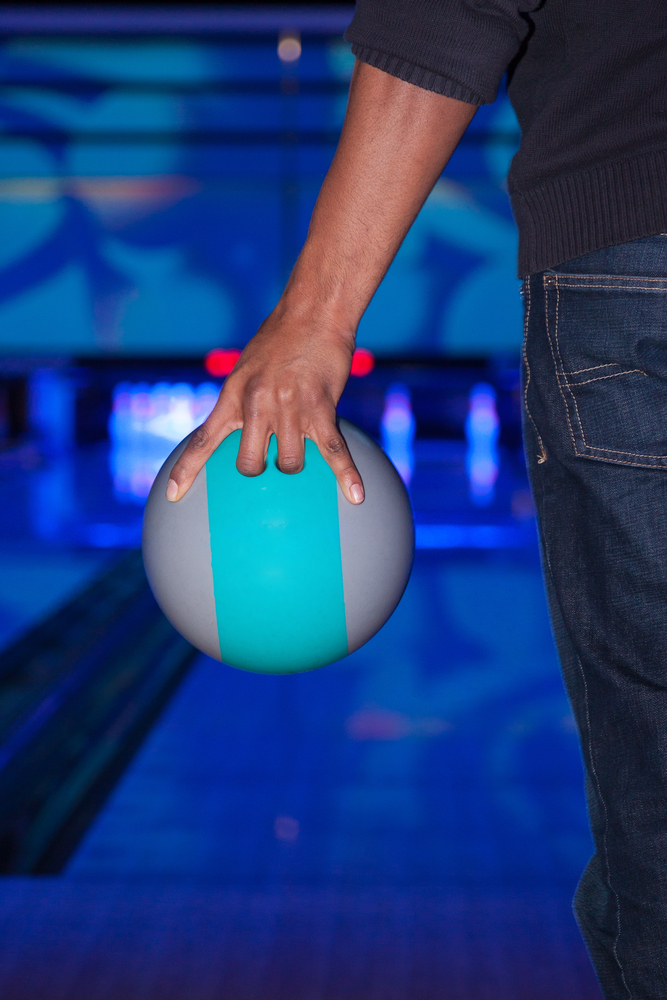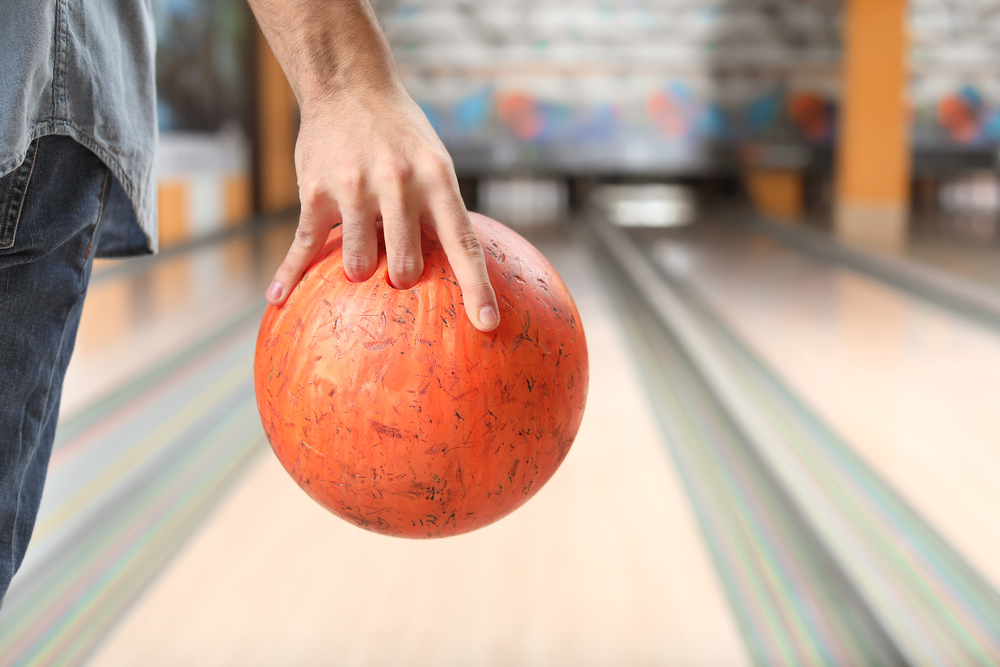
As a beginner bowler, there's a whole lot that you just don't know. And without basic working knowledge of the sport, there’s no way that you can consistently score well. That's where we can help.
This article will discuss some basic tips that will help you improve your bowling game. We'll cover everything from how to choose the right ball to how to perfect your stance.
So, whether you are just starting out or looking for a few pointers to take your bowling skills up a notch, read on for the best bowling tips for beginners bowling!
Contents
Bowling Tips for Beginners

Choose the Right Ball
You can’t expect to bowl well if you don’t have the right ball. If you select a ball that is too heavy or too light, it will be difficult to control.
There’s a universal rule in the bowling world that can help you find a good bowling ball – it states that it should weigh about 10% of your body weight.
So, if you weigh 150 pounds, your ball should be around 15 pounds.
Of course, this is just a general guideline – you may need to experiment with different weights to find if a heavier or lighter ball works best for you.
Bowling ball sizes run the gamut between 6 and 16 pounds. If you are unsure which size to choose, ask a bowling alley employee for help. They will be able to recommend a ball for you.
Also, ensure that the finger holes are situated in a comfortable position. If they are too wide or too narrow, it will be difficult to grip the ball correctly, and your fingers may even get stuck.
Do yourself a favor and test out several bowling balls before choosing one. Roll it down the lane a couple of times and see how you do. You’ll notice that one of the house balls just feels right.
Get a Good Grip on Your Bowling Ball
Once you have selected your ball, it is time to get a good grip. The way you hold the ball will no doubt affect your results, so do yourself a favor and figure out how you want to grip it.
There are three main types of grips:
- the standard grip
- the two-handed grip
- the fingertip grip
The standard grip is the most common grip type. To use this grip, place your middle finger and ring finger inside the ball, your pointer and pinky on the outside, and your thumb in the bottom hole. All of your fingers, except the pointer and pinky, will be all the way inside the ball.
The fingertip grip is similar to the standard grip, but instead of placing your fingers all the way inside the ball, you only use your fingertips. This grip makes it easy to put some spin on your ball during your release.
The two-handed grip is often used by bowlers who want more power behind their shots. It involves throwing the ball with two hands.
Experiment with all three of these grips to see which one works best for you. Remember, there is no right or wrong way to grip a bowling ball – it is all about finding what works for you. However, most beginners tend to go for the standard grip.

Get Into the Proper Bowling Stance
Your stance is another factor in how well you ultimately play. If you are not in the proper position, it will be difficult to control the ball. When you are setting up for your shot, be sure to keep your feet shoulder-width apart and your knees bent.
You should also lean forward slightly, keeping your back straight. Once you have found your stance, practice throwing the ball a few times until you feel comfortable.
Release the Ball at the Right Time
One of the most common mistakes that beginners make is releasing the ball too early or too late. If you release the ball too early, its speed will decrease considerably before it reaches the pins, potentially leading to a missed strike.
On the other hand, if you wait too long to release it, it may bounce and find its way to the gutter. The key is to find the perfect balance. Experiment with different release points where the ball begins in the correct spot on the lane.

Keep Your Arm Straight and Follow Through
When you are bowling, you need to keep your arm straight. If you don't, you will not bowl a straight ball in a straight line. Instead, it will veer off to the side, making it difficult to hit the head pin.
After you have released the ball, follow through with your shot. This means that you should continue moving your arm forward and upward after releasing the ball. Doing this will help ensure that the ball travels on a straight path.
Take Your Time
When you are first starting out, it is crucial to take your time. Don't rush your shots – focus on accuracy over speed. Once you have perfected your bowling technique, you can make quick shots. But in the beginning, it is best to take your time.
Practice, Practice, Practice
Like with anything, progressive practice leads to improvement in bowling. The more you bowl, the more you will improve your bowling techniques and the better you will become at the sport.
So, don't be discouraged if you don't get strike after strike the first time. Keep at it, and you're sure to see your scores improve.
Don’t Worry About Hooking the Ball
Trying to hook the ball before learning the basics of the sport can lead to frustration. This shot is reserved for those who know a thing or two. Instead of worrying about hooking the ball, focus on throwing it straight.
As you become more comfortable with the game, you can start to experiment with different shots, including learning how to make the ball hook. But in the beginning, it is best to stick with the basics.
For those who don’t know, hook shots happen when the ball curve sharply on its trip down the lane.
Don’t Go Beyond the Foul Line
When you are bowling, it is important to stay behind the foul line. This is the line that runs across the front of the bowling lane. If you step over this line, it will be considered a foul, and your shot will not count.
In addition, you could end up injuring yourself if you go too far. Because the lane is coated in oil, you're bound to slip if you go beyond the foul line.
Go for Strikes vs. Spares
When you are bowling, your goal should be to get strikes. A strike is when you knock down all of the pins with your first ball. This is the best possible outcome, as it gives you the most points.
When you score a strike, you get 10 points plus the number of pins you knock over with your next two balls. If you are unable to get a strike, your next best option is a spare.
This is when you fail to knock down all the pins on your first ball and must knock down the rest with your second ball. A spare gives you ten points plus the number of pins you knock over with your next ball.
While it is essential to try for strikes, don't get discouraged if you end up with a spare. It's a whole lot better than a gutter ball.
Don’t Stand on the Lane Approach if It’s Not Your Turn
When it is your turn to bowl, approach the lane and do your thing. But if it is not your turn, remain in the seating area.
Standing on the lane approach at an inappropriate time will not only annoy other bowlers but can also throw off their game.
So even if you are just waiting for a friend to finish their turn, be sure to stay off-the-lane approach – it’s just good bowling etiquette.
Related Articles
Now that you have your foundation of knowledge, it is time to hit the bowling lanes! Remember to practice, experiment with different grips, and focus on throwing straight shots and bowling etiquettes. And most importantly, have fun!
Bowling is supposed to be an enjoyable experience. We hope that these tips help you to get the most out of your bowling experience.
Kira Byrd, a Certified Fraud Examiner, holds a B.S. in Accounting from the University of Alabama at Birmingham. With a passion for bowling from her childhood, Kira has poured her expertise and personal experiences into creating and nurturing Bowling For Beginners. Kira's mission is to meet new bowlers where they are and guide them toward consistently achieving higher scores. With a focus on skill development and strategic techniques, she empowers readers to take control of their game and unlock their true potential.
Bowling For Beginners embodies strict editorial integrity, ensuring reliable and unbiased information. Kira's commitment to delivering valuable insights and practical strategies is reflected in every article. Here's an explanation of our editorial policy and how we get money.





